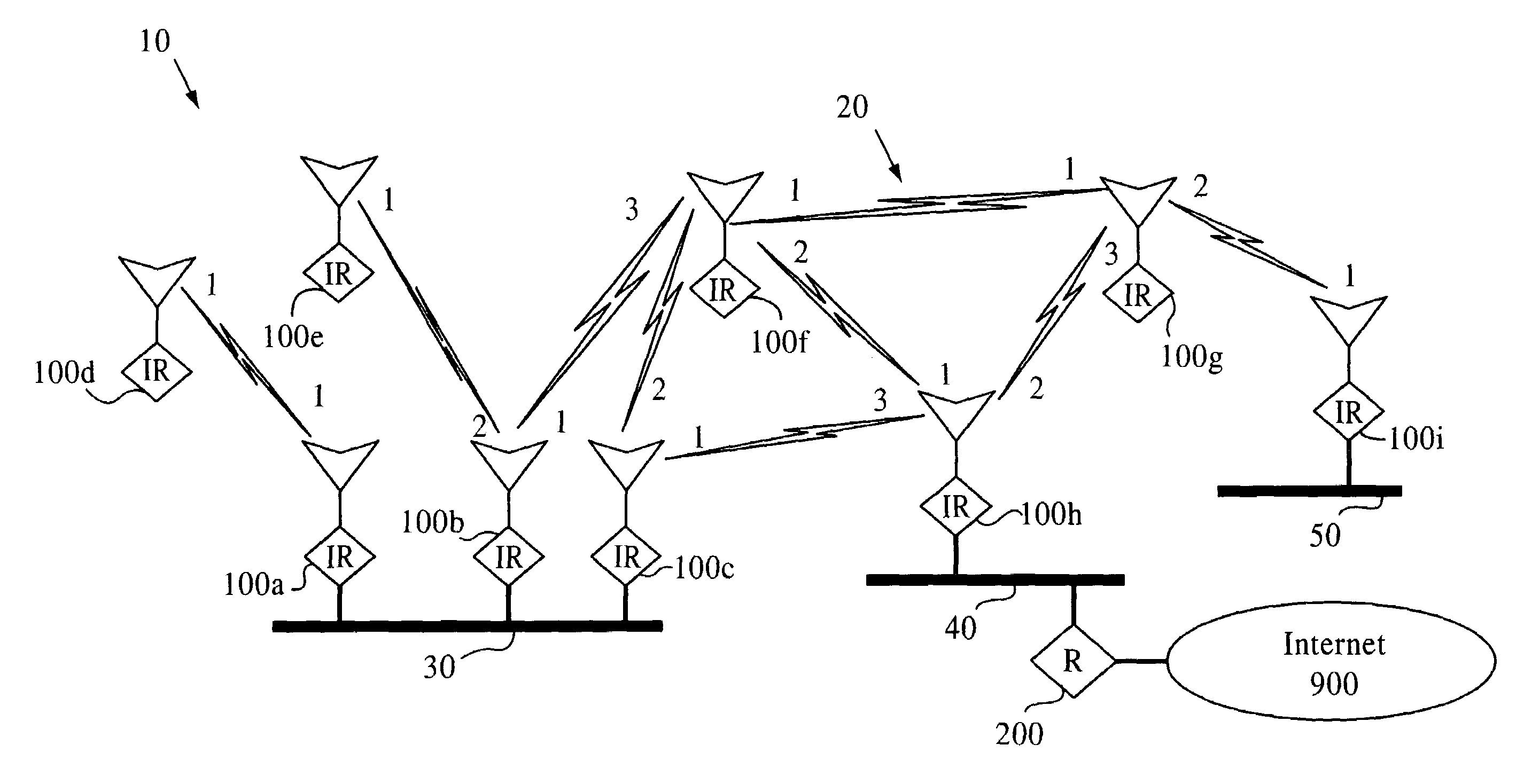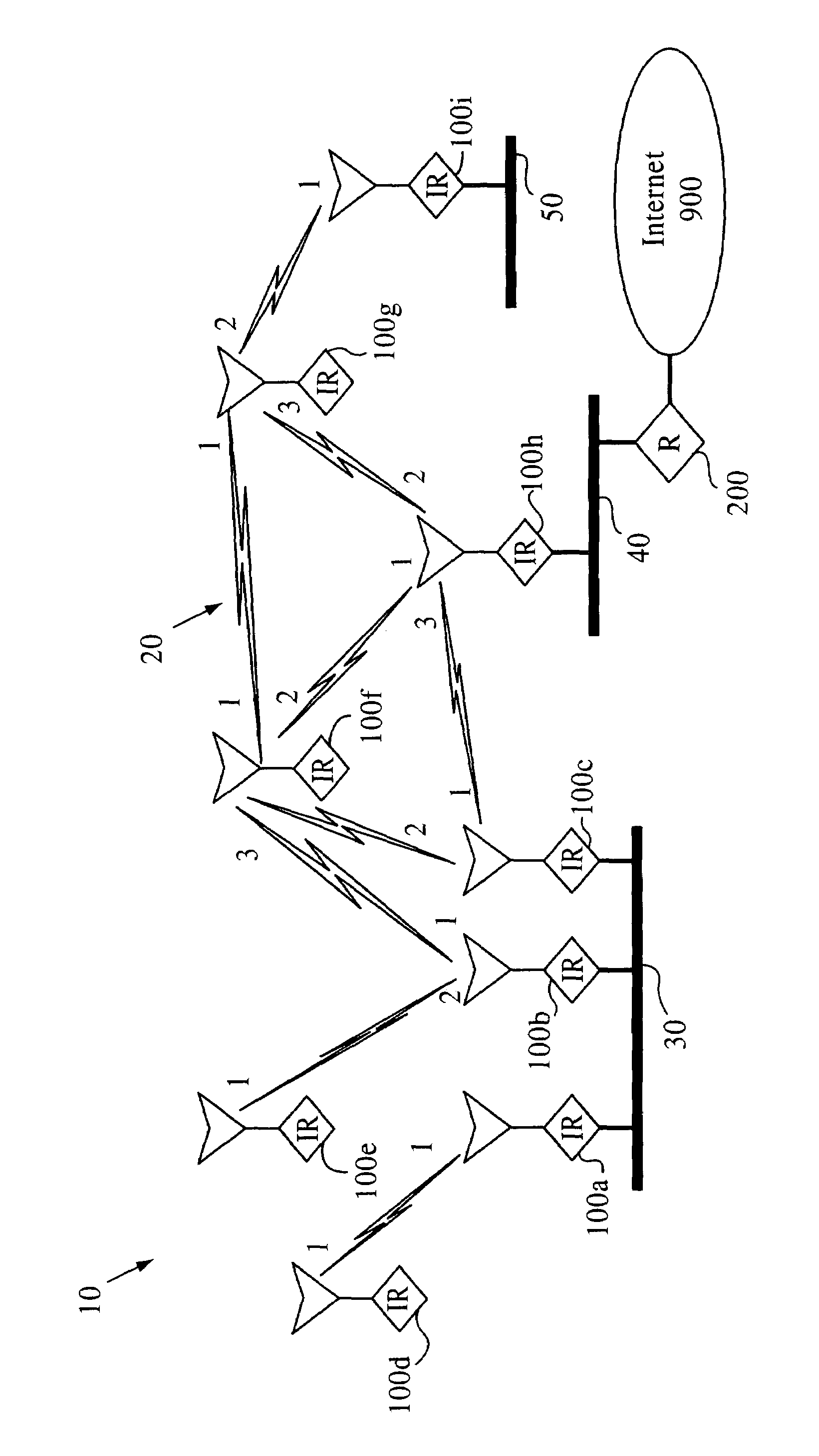Multicast routing in ad-hoc networks
a multicast routing and ad-hoc technology, applied in multiplex communication, data switching networks, data switching details, etc., can solve the problems of traffic overhead, untethered routers may need to operate with battery life constraints, and relatively limited channel bandwidth available in ad-hoc networks
- Summary
- Abstract
- Description
- Claims
- Application Information
AI Technical Summary
Benefits of technology
Problems solved by technology
Method used
Image
Examples
Embodiment Construction
[0032]A method for multicast routing in ad hoc networks is disclosed herein. Although disclosed with reference to a specific unicast routing protocol and certain illustrated embodiments, the following description of embodiments of MOST should be regarded as exemplary only and should not be deemed to be limiting in scope. Those skilled in the art will recognize that the present invention may be implemented in a variety of ways and be applied in a variety of systems.
I. Basic Service and Architecture
[0033]The present invention is well suited for an ad hoc network that provides a seamless extension of the IP Internet to the ad hoc wireless environment. MOST will be described in terms of its operation in internet radios or IRs, which are wireless routers. However, it will be evident to those skilled in the art that MOST applies to computer networks an internetworks that need not be based on wireless links for router interconnection.
[0034]FIG. 1 illustrates aspects on an exemplary ad hoc ...
PUM
 Login to View More
Login to View More Abstract
Description
Claims
Application Information
 Login to View More
Login to View More - R&D
- Intellectual Property
- Life Sciences
- Materials
- Tech Scout
- Unparalleled Data Quality
- Higher Quality Content
- 60% Fewer Hallucinations
Browse by: Latest US Patents, China's latest patents, Technical Efficacy Thesaurus, Application Domain, Technology Topic, Popular Technical Reports.
© 2025 PatSnap. All rights reserved.Legal|Privacy policy|Modern Slavery Act Transparency Statement|Sitemap|About US| Contact US: help@patsnap.com


